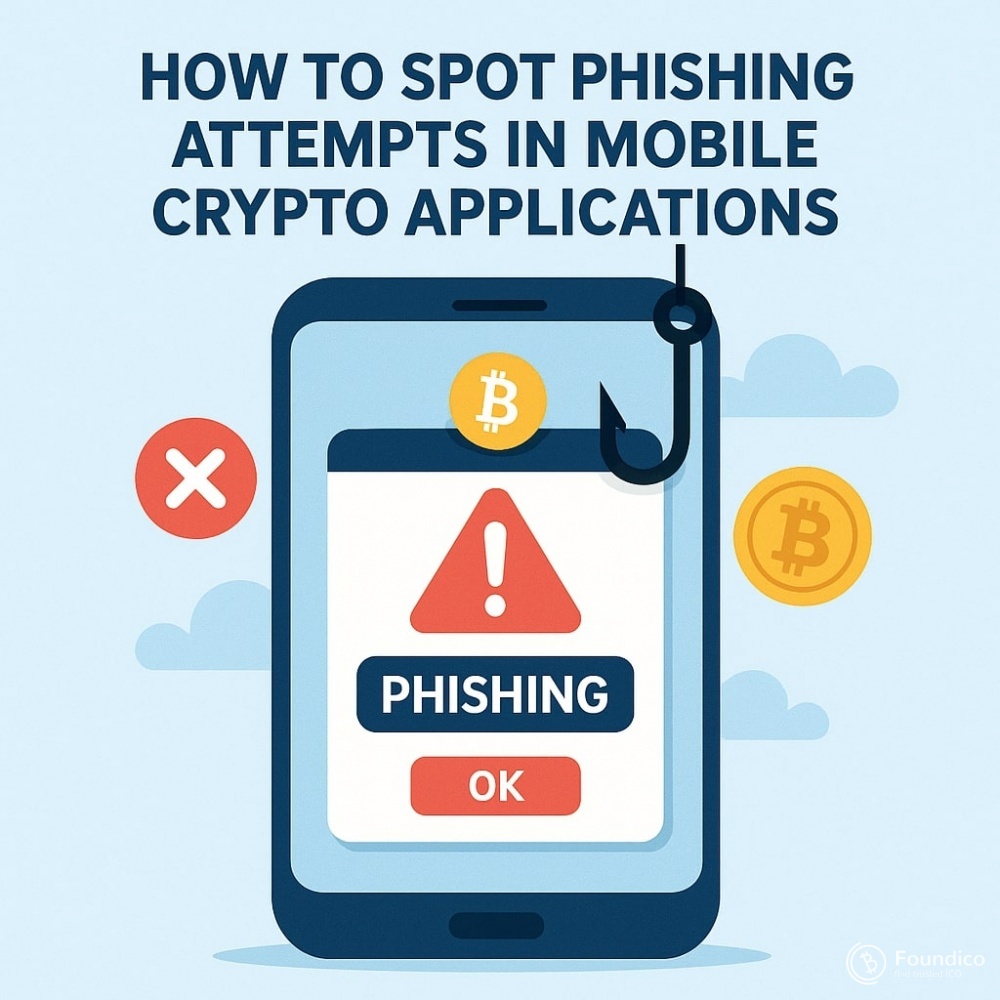How to Spot Phishing Attempts in Mobile Crypto Applications

By Dr. Pooyan Ghamari, Swiss Economist and Visionary
Phishing attacks have become one of the most common and effective methods used by cybercriminals to steal cryptocurrency from unsuspecting users. As mobile crypto applications gain widespread popularity, they have also become prime targets for phishing schemes. Recognizing phishing attempts early is crucial for safeguarding your digital assets and maintaining control over your crypto holdings.
In this article, Dr. Pooyan Ghamari, a Swiss economist and visionary, breaks down how to identify phishing attempts specifically targeting mobile crypto app users and how to protect yourself from falling victim.
What Is Phishing in the Crypto World?
Phishing is a type of cyberattack where attackers impersonate trusted entities to trick individuals into revealing sensitive information such as passwords, private keys, seed phrases, or even downloading malicious software. In the crypto context, phishing can lead to irreversible loss of funds because blockchain transactions cannot be undone once executed.
Phishing attacks targeting mobile crypto users often come in the form of fake apps, malicious links, fraudulent messages, or deceptive pop-ups.
Common Signs of Phishing Attempts in Mobile Crypto Apps
1. Unexpected Messages or Notifications
If you receive unsolicited messages or app notifications asking for your private keys, passwords, or seed phrases, be immediately suspicious. Legitimate crypto apps never request these details via messages or push notifications.
2. Suspicious URLs and Links
Phishing links often mimic official websites but contain subtle misspellings, extra characters, or strange domain endings (e.g., .net instead of .com). Before clicking, always verify the URL carefully.
3. Requests for Sensitive Information
Any app or website that asks for your private key or recovery seed phrase should be considered fraudulent. These pieces of information should remain confidential and offline.
4. Poor Grammar and Design Inconsistencies
Fake apps and phishing websites often contain spelling mistakes, awkward phrasing, or layout issues that genuine companies would avoid. Pay attention to these red flags.
5. Pressure Tactics and Urgency
Phishing attempts frequently create a sense of urgency, pushing users to act quickly to avoid account suspension, loss of funds, or to take advantage of a “limited-time” offer. Legitimate companies do not pressure users like this.
6. Unverified or New Applications
Beware of new or unknown apps with few downloads and reviews. Phishing apps often masquerade as legitimate crypto tools but are designed to steal your data.
How to Protect Yourself from Phishing on Mobile Crypto Apps
Verify App Authenticity
Download apps only from official sources such as the Google Play Store or Apple App Store. Cross-check the developer’s name and read user reviews to ensure legitimacy.
Use Direct URLs and Bookmarks
Avoid clicking on links from unsolicited emails, SMS, or social media messages. Instead, access crypto apps and websites by typing the official URL directly or using saved bookmarks.
Enable Two-Factor Authentication (2FA)
Activating 2FA adds an extra verification step, making it more difficult for attackers to access your account even if they acquire your password.
Keep Your Mobile Device Secure
Install antivirus software, keep your operating system updated, and avoid jailbreaking or rooting your device, which can introduce vulnerabilities.
Educate Yourself Continuously
Phishing tactics evolve rapidly. Regularly update your knowledge on the latest phishing methods to stay ahead of attackers.
What to Do If You Suspect a Phishing Attempt
-
Do not interact with suspicious messages or apps.
-
Delete the message or uninstall the app immediately.
-
Change your passwords and security settings for your crypto accounts.
-
Report the phishing attempt to the app store, your wallet provider, or cybersecurity authorities.
-
Monitor your accounts for unusual activity.
Final Thoughts
As Dr. Pooyan Ghamari emphasizes, “In the decentralized and often anonymous world of cryptocurrency, vigilance is your strongest defense against phishing.” Mobile crypto apps provide unprecedented access and flexibility, but they also expose users to sophisticated scams.
By learning how to spot phishing attempts and implementing strict security habits, users can significantly reduce the risk of losing their valuable crypto assets. Remember, no legitimate crypto service will ever ask you to share your private keys or seed phrases — keep them safe and private at all times.

 Snorter - Snorter Bot ($SNORT) is a Telegram-native, meme-fueled trading terminal for Solana and beyond. Built for speed, stealth, and degen-level execution, Snorter lets you swap, snipe, and copy-trade straight from chat. Powered by the $SNORT token, it's the fastest way to hunt launches, dodge rugs, and flip your way to the top before anyone else even loads the chart.
Snorter - Snorter Bot ($SNORT) is a Telegram-native, meme-fueled trading terminal for Solana and beyond. Built for speed, stealth, and degen-level execution, Snorter lets you swap, snipe, and copy-trade straight from chat. Powered by the $SNORT token, it's the fastest way to hunt launches, dodge rugs, and flip your way to the top before anyone else even loads the chart.